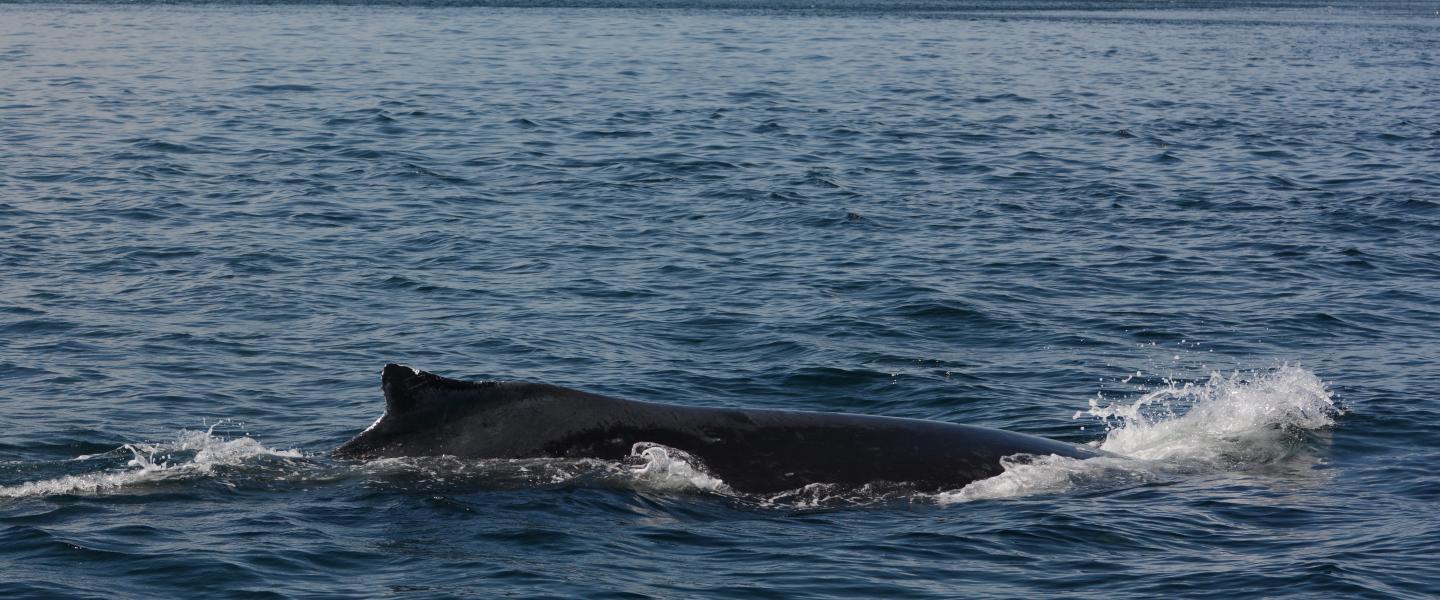
Kelly | M/V Kestrel | August 29th 2024 | 2pm |
I knew were likely to see two different whale groups when we left the harbor on this beautiful Friday afternoon...but I not expect that we were going to see 4 different groups, totaling 13 INDIVIDUAL whales! The stars were certainly aligned.
The first whales we encountered were of the baleen variety, humpback whales to be precise. Typically, our humpbacks are solitary as they make their way through the Salish sea along their migration route. Not today! A whopping 3 humpbacks were swimming off the southern coast of San Juan Island in a shallow area known as Salmon Bank. Baleen whales are drawn to these shallow banks to feed on the small schooling fish that congregate, they will also strategically use the underwater banks to easily corral large groups of fish into their mouths. This trio was surfacing side by side, flicking up their tail flukes every other surfacing. When a humpback flukes, it usually means we're not seeing that whale for at least another few minutes. Not today! These whales were surface active almost the entire time we were on scene. At one point, we even caught a glimpse of those accordion pleats on one whales lower jaw along with a large pectoral fin in the air!
Our next stop was a group of killer whale in the middle of the Haro Straight. This family is known as the T60's (Minus two members):
- T60 "Panthera" 1980 F (Mom)
- T60C "Yelnats" 2001 M
- T60F "Tigris" 2012 F
- T60G "Unicia" 2019 F
This family was in transit mode. Swimming across the channel and heading for San Juan Islands westside shoreline. T60C aka Yelnats' large 6ft dorsal fin towering over the rest of the family with each surfacing. As the whales approached the islands coast, we peeled off and motored back toward Cattle Pass. Cattle Pass is a narrow body of water between San Juan Island and Lopez island. It is an extremely productive area that draws in a large amount of wildlife. One species in particular that congregate here in large numbers, are steller sea lions. We stopped at Whale Rocks to watch these massive sea lions sleep, swim and yell at each other. They never fail to entertain us!
Just as everyone thought the tour was coming to an end, another group of whales are reported just north of us. It was perfect, right on our path back to the harbor. This group of Killer whales are known as the T49A's and consists of:
- T49A "Nan" 1986 F
- T49A3 "Nat" 2011 M
- T49A4 "Neptune" 2014 M
- T49A5 "Nebula" 2017 F
- T49A6 "Charlie II" 2022 ?
These whales were stalled out and socializing with one other. Often changing direction, speeding up, slowing down and sometimes lingering at the surface in a behavior known as logging. It's really hard to say with 100% what these whales are doing at any time, but social play is my best educated guess. After many breaths at the surface these whales would go down on longer dives ranging from 2-6 minutes. On one particular long dive, one whale surfaced facing the boat within 200 yards. When this happens, we respectfully cut the engine and float in place. Moments later we watched this young whales body swim under our boat on the starboard side, and come into view underwater off our port side. He then paused for a moment, turning on his side to get a better look at us with one eye, then turned on a dime and swam under the boat over to the starboard side. Whooosh! A loud exhale, this time from the larger male. We watched in awe as this large predator swam directly under the bow of our boat. This was truly one of the most breathtaking encounters I have ever had on the water.
As a lovely cherry on top, on our way back into the harbor we were treated to a few looks at a humpback whale transiting down San Juan Channel. We only had time for 3 surfacing, but what an incredible treat to see 4 humpbacks and 9 killer whales in one trip!